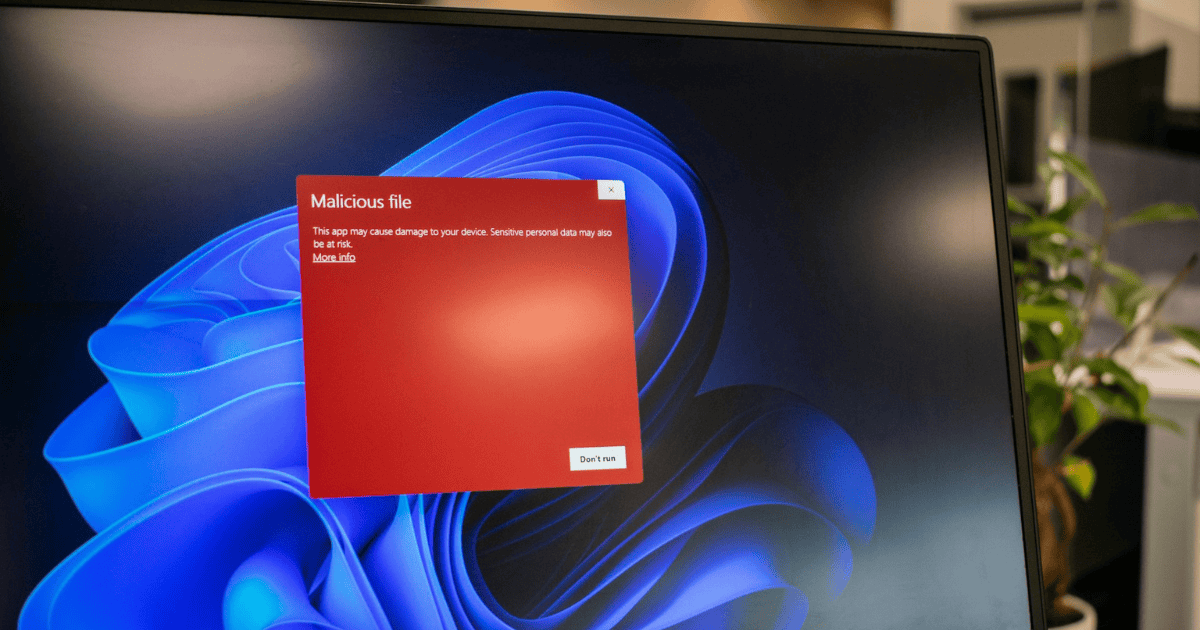Last Updated on 22 February 2024 by Alastair Digby
Attack surface management and vulnerability management are two cybersecurity approaches that share similar goals in strengthening your security posture and reducing risks in your environment.
But this convergence around similar goals often results in conflating the two approaches, which is an important mistake to avoid when you’re in the market for a new cybersecurity solution that assists with their implementation.
Read on to get some clarity on attack surface management vs vulnerability management to help you better discern between the two and choose what’s right for your business.
Table of Contents
What is Attack Surface Management?
Attack surface management combines asset discovery, classification, and monitoring capabilities to get continual visibility into your organization’s entire attack surface. This attack surface encompasses all the potential points of unauthorized access to your systems. All it takes is one vulnerable point in your attack surface going unnoticed and unprotected to provide an entry point for a malicious actor to potentially extract data or install malware.
Today’s IT environments are far more dynamic than the relatively static environments of a decade or two ago. Containers, cloud infrastructure, and SaaS applications get provisioned often without strict adherence to security policies, which results in shadow IT assets. Distributed workforces connect to networks or access digital assets in the cloud remotely at intermittent times. The crux of the matter is that you probably have an expanding attack surface in which it is difficult to maintain visibility over and reduce risk exposure; attack surface management solves these issues.
Being able to discover all Internet-facing digital assets and get a complete picture of your evolving attack surface provides invaluable insight on its own by finding assets that you were unaware of. But the additional aspects of attack surface management are just as important. In particular, effective attack surface monitoring notifies you about vulnerable assets, misconfigurations, and changes to your IT environment so that you can proactively remediate faster than hackers can get inside.
It’s important to understand that an attack surface includes physical points of access in addition to digital. Your digital attack surface typically includes all external-facing, Internet-exposed assets including ports, email servers, API keys, web applications, public cloud services, IoT devices, SSL certificates, VPNs, and even web domains. Your physical attack surface could be thought of as all potential points of unauthorized entry into systems, and it spans physical access to workstations, passwords written down on paper, not using swipe cards to block access to office premises, and more.
You could also alternatively break down digital and physical into external and internal attack surfaces. Your physical attack surface is far easier to get visibility into and secure, is much less exposed to attack, and doesn’t change anywhere near as often as your digital or external attack surface.
It’s for this reason that attack surface management solutions tend to concentrate on your external attack surface. The remainder of this article will concentrate on external attack surface management, although most concepts will apply to your physical attack surface too.
What is a Vulnerability?
A vulnerability is a weakness or defect in the code of a network, device, or application that, if it is exploited, could jeopardize the confidentiality and integrity of data stored there. If exploited it could allow an attacker to gain unauthorized access, elevate privileges, or denial of services. An exploit is a piece of software or a program used to take advantage of a weakness.
During the course of 2022 there were a number of high profile vulnerabilities that caused widespread concern, some with far reaching an ongoing implications. We’ve listed some of the major security flaws that organizations should be conscious of which emerged in 2022.
Log4Shell/Log4j (CVE-2021-44228)
Spring4Shell/Springshell (CVE-2022-22965)
BIG-IP iControl REST RCE (CVE-2022-1388)
Follina MSDT Bug (CVE-2022-30190)
Google Chrome Use After Free in Animation (CVE-2022-0609)
Zimbra RCE (CVE-2022-27925 and CVE-2022-41352)
ProxyNotShell (CVE-2022-41040 and CVE-2022-41082) in Exchange
Atlassian Confluence Vulnerability (CVE-2022-26134)
ZyXEL Vulnerability (CVE-2022-30525)
To help combat and improve security programs, the majority of discovered vulnerabilities are listed in the Common Vulnerabilities and Exposures (CVE) List and posted on the National Vulnerability Database (NVD).
What is Vulnerability Management?
Vulnerability management is a structured process for identifying, assessing, prioritizing, and resolving security vulnerabilities. The point here isn’t to just discover critical vulnerabilities that pose grave security concerns (although that’s clearly important). Vulnerability management also helps you get a better idea about all kinds of weaknesses commonly found in your environment and how to minimize them (such as by improving your patch management processes).
To bring the definition one step back, what exactly is a vulnerability? It’s a weakness in a system, process, or control that a threat actor could potentially exploit to conduct a cyber attack. The threat actor could be someone external to the organization or an insider threat.
A somewhat myopic focus on software flaws in web applications or unpatched operating systems leads many people to conclude that all they need to identify and manage their vulnerabilities are basic vulnerability scanning tools that search for known coding flaws, open ports, or outdated software/firmware in their environments. While this is a good start in vulnerability management, it probably won’t reveal other vulnerabilities, such as misconfigured cloud services or so-called zero-day vulnerabilities that haven’t been published in any database.
Vulnerability discovery through scanning tools should entail more advanced capabilities, such as searching for misconfigurations caused by human mistakes, services unintentionally exposed to attackers, and even zero-day flaws like the December 2021 Apache Log4j vulnerability. There’s even an argument that if you want comprehensive vulnerability management, the identification of vulnerabilities should incorporate results from both vulnerability scanning and penetration testing.
In an attacker’s world, coming up with a working exploit for a vulnerability can allow them to run malicious code, propagate computer worms or other malware, and even steal sensitive data assets. More stringent regulatory requirements pertaining to data privacy and an increasingly dangerous threat landscape are creating greater pressure on organizations to consistently manage the vulnerabilities in their IT environment and understand the risks they pose.
A final brief point of note about vulnerability management is that vulnerabilities can also be introduced into your environment by third parties. For example, a subcontractor with access to your systems might practice poor password management or otherwise lack the robust security standards you expect. Or hackers might set their sights on these third parties with complex hacks in the knowledge that a single third party could provide access to systems and data at many organizations (see the Accellion and Solarwinds breaches as cases in point). It’s for this reason that a vulnerability management process should also include detecting vulnerabilities introduced by third parties.
Attack Surface Management vs Vulnerability Management: Key Differences
With these explanations in mind, let’s now move on to explore the main differences between attack surface management and vulnerability management under a few headings.
Scope
The first key difference is notable in the scope of what these two processes cover in terms of security risks. Take a hypothetical example scenario in which you find a vulnerability in an exposed web application. The scope of vulnerability management covers everything from finding these kinds of vulnerabilities to remediating them.
But attack surface management gives your security teams a more holistic view of things by going beyond code-based weaknesses to cover other possible entry points across infrastructure, devices, apps, and data. Furthermore, attack surface management accounts for the interconnectedness of everything. From an attacker’s perspective, that same vulnerability in a web application might provide access to connected IT assets, eventually leading to achieving their objectives.
Different Discovery Approaches
The initial step of detection in vulnerability management and discovery in attack surface management differ considerably in what happens across both approaches. For vulnerability management, detection efforts require the use of vulnerability scanners to find known vulnerabilities and pen testing results for harder-to-find vulnerabilities.
In attack surface management, specialized software needs to find and map all your digital assets that could be points of unauthorized intrusion into your environment (e.g. GitHub repositories, IoT devices, and IP addresses). Attack surface discovery needs to be complete and account for the dependencies and connections between different digital assets.
Classifying Vulnerabilities
Part of the vulnerability assessment stage involves classifying vulnerabilities. This sounds equivalent (at least on the face of things) to the classification stage in attack surface management. However, attack surface management goes more granular with its classification.
Vulnerabilities typically get classified according to types (e.g. firmware, software) or root causes (e.g. a vulnerable open source library). In attack surface management, classification involves a granular inventory that labels assets according to several different properties, such as technical details, business importance, owners, and compliance requirements.
Security Ratings and Risk Scoring
The assessment stage of vulnerability management must involve an effort to prioritize vulnerabilities for remediation based on their risks. Without this effort, your security or admin teams spend valuable time implementing vulnerabilities that present low risks or stand little chance of being exploited while resource constraints leave more critical vulnerabilities unfixed.
In a similar vein, attack surface management needs to have a risk scoring (prioritization) step that reflects the fluctuating risks posed by different digital assets in your environment. A large enterprise might have tens of thousands of digital assets making up its attack surface. No matter a company’s resources, managing the attack surface calls for prioritizing assets based on the risks they pose.
Where the risk scoring starts to differ is that vulnerabilities are often scored based on their severity according to a standard, such as the Common Vulnerability Scoring System (CVSS). With your attack surface assets, you can factor CVSS into the equation, but other factors should be included, such as asset discoverability, business purpose, and potential for damage if the asset is compromised.
Inherent Continuity
Vulnerability management is not an inherently continuous process. At organizations lacking cybersecurity maturity, you’ll often find a scattergun approach in which vulnerabilities are managed on an ad hoc basis. This is even though the Center for Internet Security specifically recommends continuous vulnerability management as a Critical Security Control.
In contrast, a fundamental capability baked into a modern attack surface management platform is the ability to continuously monitor your digital assets for new vulnerabilities and threats. This continuous approach is essential given the highly dynamic nature of today’s cyber attack surfaces and the need for visibility into shadow IT assets. A platform or solution that only provides ad hoc asset discovery and monitoring is not going to keep up with the pace of evolving threats.
Which is better Attack Surface Management or Vulnerability Management?
It’s difficult to say which approach is better because both Attack Surface Management (ASM) and Vulnerability Management (VM) are important for ensuring the security of an organization’s systems and networks. Attack surface management involves identifying and reducing the number of potential entry points that an attacker could use to gain access to a system, while vulnerability management involves identifying and addressing vulnerabilities that could be exploited by an attacker. Both approaches are essential for maintaining the security of an organization’s systems and networks, and they should be implemented as part of a comprehensive security strategy.
Informer External Attack Surface Management
In summary, there are some important differences worth understanding in attack surface management vs vulnerability management. The two also share some similarities, and it’s probably fair to say that ongoing vulnerability management is a subset of attack surface management.
At Informer, it’s our mission to protect your external attack surface with an innovative platform that provides automated asset discovery in minutes across Internet-facing and cloud environments. In recognition of the fact that vulnerabilities emerge constantly, our platform comes with vulnerability discovery to continuously monitor for infrastructure and application-level security weaknesses in external assets. Reflecting the fact that some risks aren’t capturable by vulnerability scanning, we also integrate pen testing results into the platform for comprehensive attack surface management.





